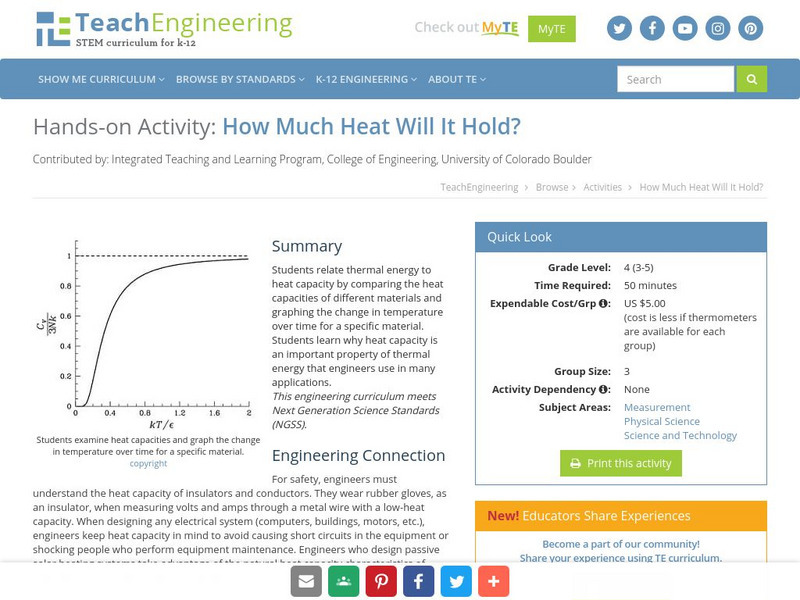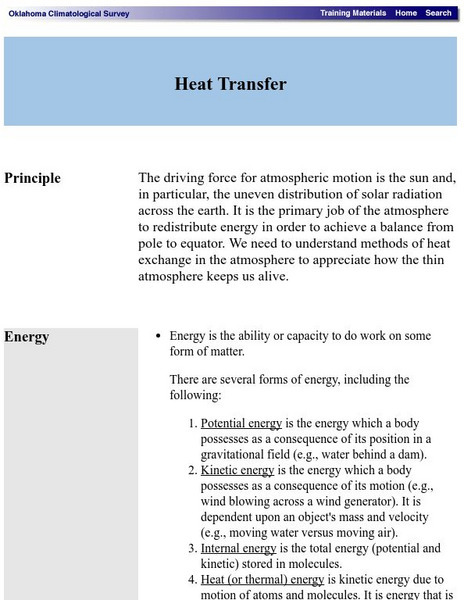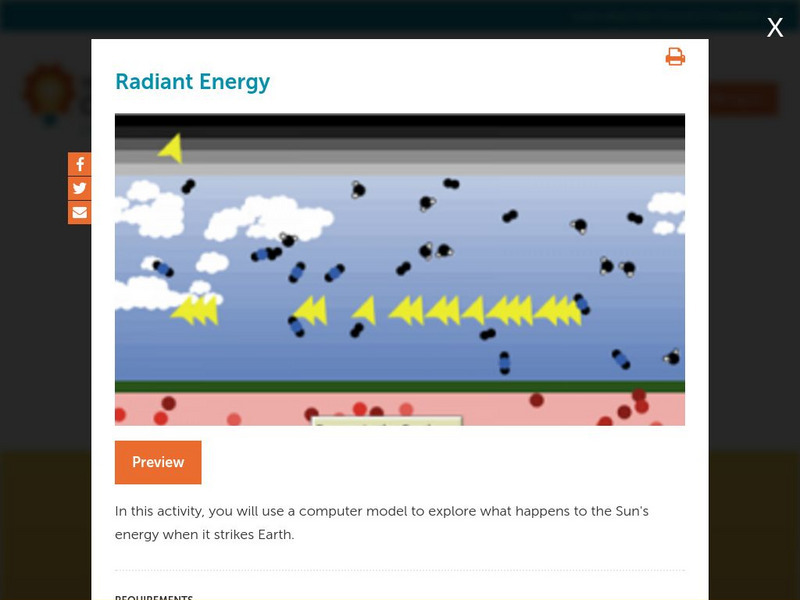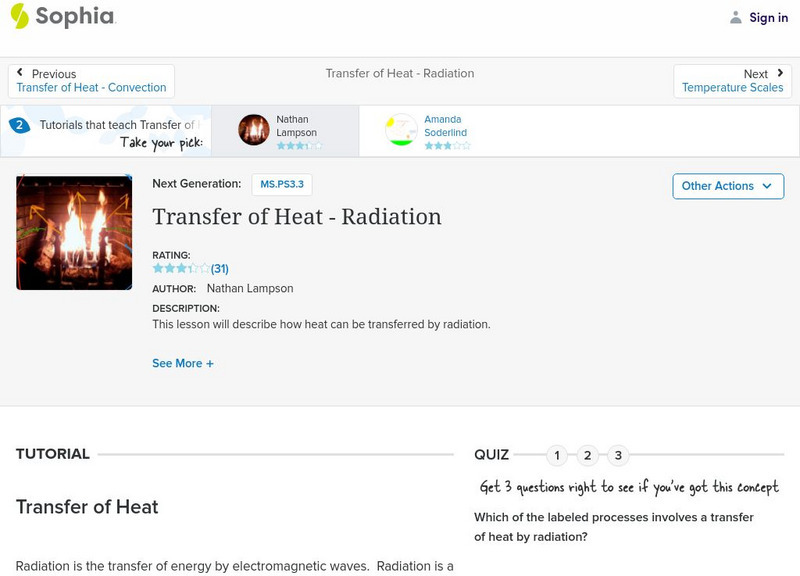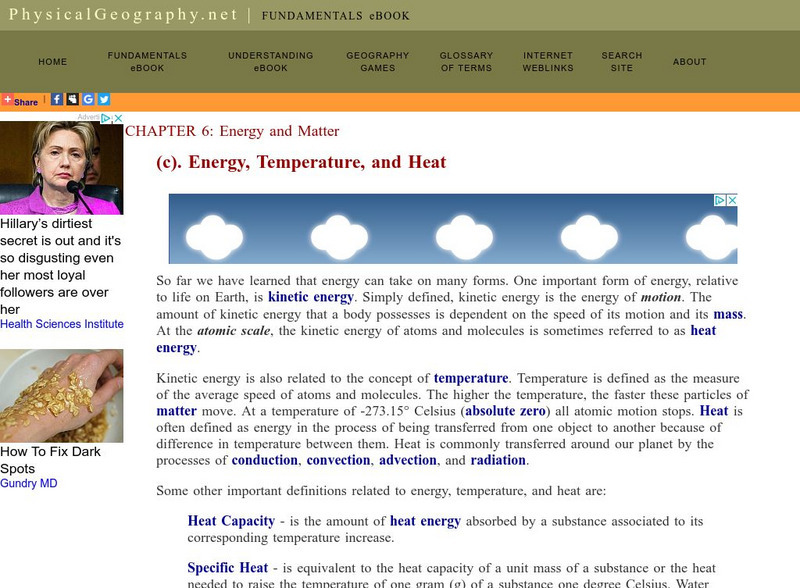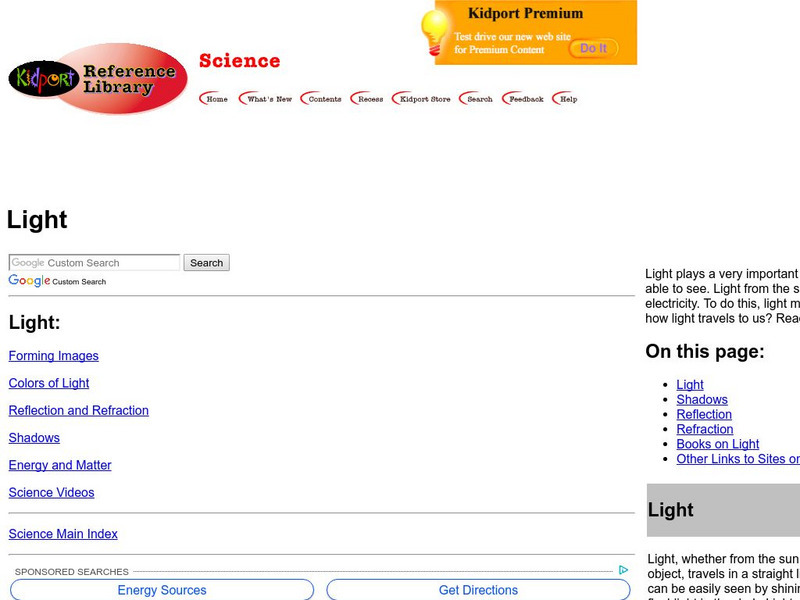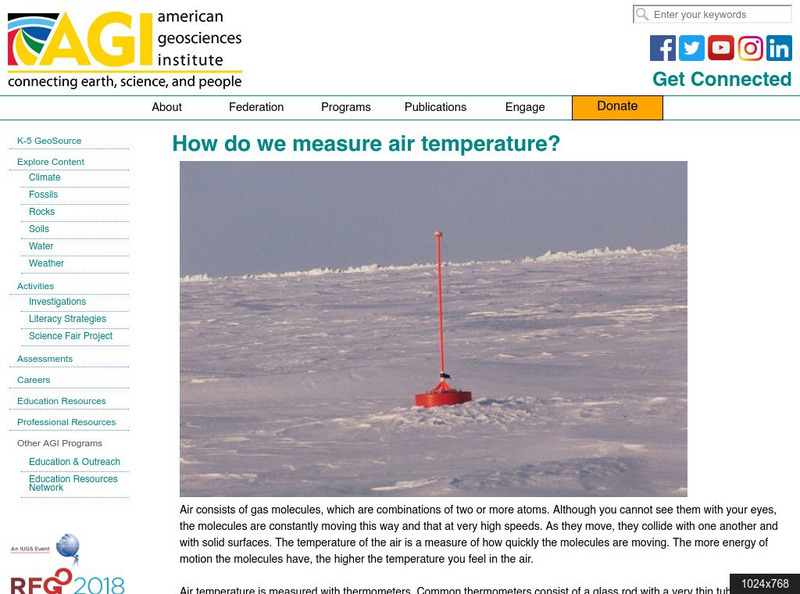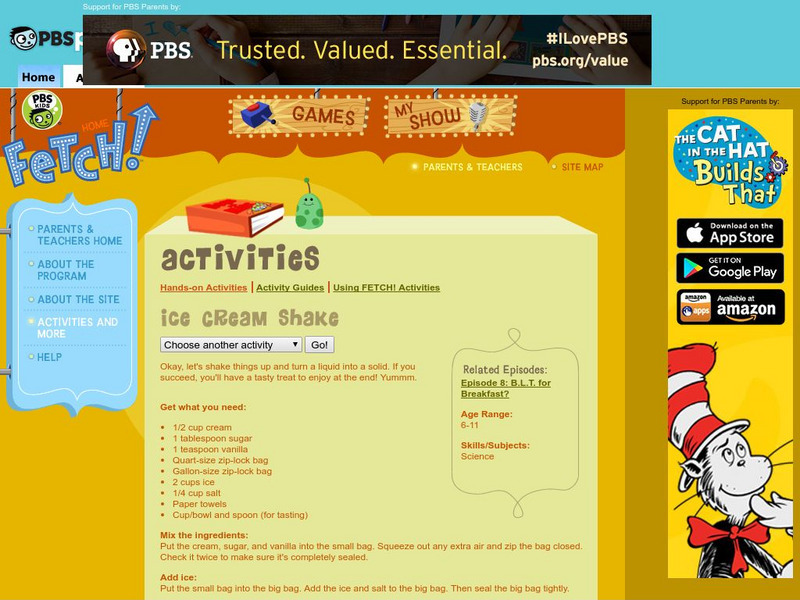TeachEngineering
Teach Engineering: How Much Heat Will It Hold?
Students relate thermal energy to heat capacity by comparing the heat capacities of different materials and graphing the change in temperature over time for a specific material. Students learn why heat capacity is an important property...
TeachEngineering
Teach Engineering: Do Different Colors Absorb Heat Better?
Students test whether the color of a material affects how much heat it absorbs. Students will place an ice cube in a box made of colored paper (one box per color; white, yellow, red and black), which they will place in the sun. The...
Oklahoma Mesonet
Oklahoma Climatological Survey: Heat Transfer
A discussion from the Oklahoma Climatological Survey of the thermal factors effecting the movement of air masses in the atmosphere. Numerous topics such as methods of heat transfer, latent heat, phase changes (including sublimation and...
Bill Nye
Bill Nye: Burn Rubber
This tutorial from Bill Nye explains how to perform a simple experiment with a rubber band. The experiment demonstrates how friction can dissipate energy as heat.
Concord Consortium
Concord Consortium: Stem Resources: Radiant Energy Flow
A virtual lab to look at the physical features of Earth that affect the amount of the Sun's energy that hits Earth. Students investigate how solar and infrared radiations enters and leaves the atmosphere with this model. Virtual lab...
Utah Education Network
Uen: Hot and Cold
Students study the energy associated with physical and chemical changes. The activity consists of observing nine phenomena.
Sophia Learning
Sophia: Transfer of Heat Radiation: Lesson 2
This lesson will describe how heat can be transferred by radiation. It is 2 of 2 in the series titled "Transfer of Heat - Radiation."
Sophia Learning
Sophia: Transfer of Heat Radiation: Lesson 1
This lesson will describe how heat can be transferred by radiation. It is 1 of 2 in the series titled "Transfer of Heat - Radiation."
Ducksters
Ducksters: Physics for Kids: Energy
Kids learn about the science behind Energy including its different forms such as chemical, electrical, heat, and gravitational. When is energy considered renewable or nonrenewable?
Other
60 Second Science: Rainbow Gel
Examine mixtures made from different substances, and discover how to make gel.
Other
Fund. Of Phys. Geography/energy, Temperature, and Heat
A page describing (in part) the distinction between energy, temperature and heat. Includes a graphic illustrating the quantity of energy needed to transform water between various states. Methods of thermal energy transfer (convection,...
Other
Characteristics of Energy and Matter
A lengthy page from the Fundamentals of Physical Geography site. Energy is distinguished from matter, and the different forms of energy are identified and discussed. Four types of heat transfer (convection, advection, conduction,...
Other
Laws of Thermodynamics
A page from the Fundamentals of Physical Geography site. Identifies, describes and elaborates upon the first, second, and third laws of thermodynamics.
Kidport
Kidport: Light
Did you know that light is a form of energy and always travels in a straight line? Discover some more interesting facts about light.
American Geosciences Institute
American Geosciences Institute: How Do We Measure Air Temperature?
Find out how scientists measure the air temperature to accurately report the weather.
Science Struck
Science Struck: Thermal Energy Facts
Explains what thermal energy is, describes some different types, and presents facts about each type.
PBS
Pbs Teachers: Ice Cream Shake
Investigate states of matter while making ice cream. Explore how to turn a liquid into a solid by removing heat energy.
Science4Fun
Science4 Fun: Energy
What is energy? Article provides a brief discussion of the many different forms of energy.
Science4Fun
Science4 Fun: Geothermal Energy
What is geothermal energy? Discover how it is obtained and generated and learn about the advantages and disadvantages.
SMART Technologies
Smart: Forms of Energy
Expose students to this introduction to several different forms of energy.
Museum of Science
The Atoms Family
Let this classic family of monsters guide you as you learn about energy. Interactive exercises, experiments, and demonstrations help to build knowledge and raise questions.
Mocomi & Anibrain Digital Technologies
Mocomi: Fun Facts About Temperature
Learn about units of temperature and other interesting facts.
Bill Nye
Bill Nye: Sock It to Me
Try this at-home science experiment to learn how warm water (sweat) makes us feel cooler.
Bill Nye
Bill Nye: Burn Rubber
Try this at-home science experiment to learn what happens when you repeatedly stretch a rubber band.


